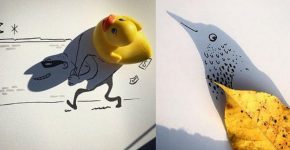How Kangaroos ‘Talk’ to Humans
Researchers find that just like domesticated animals, kangaroos can communicate when they want something.
Anyone with a pet knows that a dog or cat will communicate with their person whether they want a toy, to eat, or some attention. But a new study finds this behavior isn’t limited to domestic animals. Kangaroos also can communicate with humans, particularly when they want something.
Researchers from the University of Roehampton and the University of Sydney worked with kangaroos in Australia that had never been domesticated. They found that kangaroos gazed at a human when trying to get food which had been put in a closed box.1 The animals communicated with humans using gazes instead of trying to open the box themselves.
The behavior, which is usually exhibited by domestic animals, was unexpected, researchers said.
:max_bytes(150000):strip_icc():format(webp)/kangaroo-experimenter-gaze-f3bf739e9ebe49fe9971088ec967e210.jpg)
A kangaroo gazes at a box with food inside it and a person.
Dr. Alexandra Green
“I was very surprised, particularly on the first day of the field work when we were still developing the training protocols and one kangaroo actually demonstrated the gazing behaviour towards me. I think I actually gasped in disbelief as so many people doubted this would be possible,” lead author Alan McElligott of the University of Roehampton (now based at City University of Hong Kong), tells Treehugger.
“For wildlife carers though, this behaviour may not come as a surprise. However, it is important to test the cognitive abilities of kangaroos under an accepted scientific setup so that we can compare results objectively and potentially further this work in other similar species.”
Getting Help with an Unsolvable Task
For the study, the researchers secured a clear plastic box to a wooden board and placed a food reward inside that was very attractive to the kangaroos, like a piece of sweet potato or carrot or a few dried corn kernels. A kangaroo entered the enclosure while the experimenter stood near the box and another researcher recorded the interaction.1
This type of experiment is known as an unsolvable task because the animals need help to get what they want. Ten of 11 kangaroos actively looked at the person who had put the food in the box and nine of the 11 gazed back and forth between the box and the person.1 The study was published in the journal Biology Letters.
“Through this study, we were able to see that communication between animals can be learnt and that the behaviour of gazing at humans to access food is not related to domestication. Indeed, kangaroos showed a very similar pattern of behaviour we have seen in dogs, horses and even goats when put to the same test,” McElligott says.
“Our research shows that the potential for referential intentional communication towards humans by animals has been underestimated, which signals an exciting development in this area. Kangaroos are the first marsupials to be studied in this manner and the positive results should lead to more cognitive research beyond the usual domestic species.”
For the study, researchers tested kangaroos located in three locations: Australian Reptile Park, Wildlife Sydney Zoo, and Kangaroo Protection Co-Operative.1 The kangaroos were chosen based on how willing they were to approach the experimenters. None of them had been used in any previous cognitive research.1
“It was previously thought that ‘asking’ for help in the form of human-directed gazing and gaze alternations was a trait reserved for domesticated species, which have evolved in close proximity to humans,” McElligott says.
“However, the results challenge this notion, suggesting that wild animals (in this case kangaroos) can learn to communicate with humans through having direct contact with them. We also hope that this research highlights the advanced cognitive abilities of kangaroos and fosters more positive attitudes towards them.”




